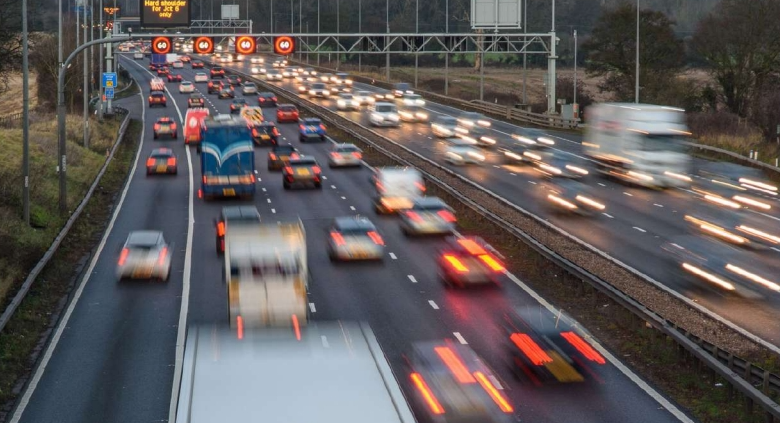Fleets are being invited to take part in a major project which uses artificial intelligence to control traffic lights to reduce congestion and air pollution.
The University of Huddersfield’s AI4UTMC research team has worked with Simplifai Systems to develop the technology, which has recently received a patent approval.
Simplifai, based at the university’s 3M Buckley Innovation Centre alongside the campus, was created through a collaboration between the University of Huddersfield’s research centre which encompasses AI, now known as the Centre for Autonomous and Intelligent Systems.
The collaboration has already begun transforming traffic flow on roads through a new form of smart urban traffic management using AI.
“Managing networks is more complex than it was five years ago, and what we’re trying to achieve is more complex as well,” says Keith McCabe, transport technology industry carbon ambassador and CEO of Simplifai, speaking at recent the Fleet200 Strategy Network meeting in Barnsley.
“In the past you would simply set up the traffic lights based on an average Tuesday and leave them for the next day; the challenge now is that there is no such thing as an average Tuesday.
“The biggest change was how travel patterns have changed as a result of covid. People don’t go to work in the same way, people don’t shop the same way as they used to, their leisure activities happen at different times of the day.”
Its system builds on the traffic authority’s existing data and can allow simulations to take place ahead of a big local event, for example.
The AI technology is able to access existing information on congestion, traffic lights, bus movements, incidents and air quality to generate real-time strategies to solve traffic issues.
The system works by adjusting traffic light timings and can alleviate congestion hot spots, improve the management of traffic around sporting events, concerts, roadworks or traffic incidents, as well as managing traffic to reduce air pollution.
It was successfully trialled on the busy Wakefield Road in Huddersfield town centre after a Muse concert in June, which led to free-flowing traffic and no congestion on the one route they controlled.
McCabe says there are also plans to integrate temporary traffic lights with the AI system so they can take into account any change in traffic.
“With this project we are looking to forecast ahead for, say, three months. The challenge comes with emergency works.”
Simplifai has also been awarded a contract by Hull City Council to develop traffic management systems aimed at improving traffic flow.
In Hull, the AI technology will access the council's existing information on congestion, traffic lights, bus movements, incidents and air quality to source new insights into traffic movements on the road network and generate new real-time strategies to solve complex traffic control issues.
It will be trialled in Hull for two years as part of an ongoing government-funded traffic signals project.
The use of AI-controlled traffic management systems will take on a greater role in the future as more connected and autonomous vehicles hit the roads, as they will ‘talk’ directly to the vehicles.
McCabe says: “Anyone who gets a new fleet car now has a connected vehicle. What we want to try and work out is what information we need to put in front of people driving connected vehicles, and what information when you've got a semi-autonomous vehicle, do we just send straight to the car to make the decisions for you?
“One of the reasons why we've invented this traffic control system is we know at some point, in the next few decades, the majority of the vehicles will have fully autonomous capability.
“And network operators will still be making decisions about what the priorities are for each road. But those decisions have to be communicated directly from machine to machine.
“Which doesn't mean that the drivers will come out of the loop because the drivers still say where the cars need to go and how would they like to get through the network, but actually, the vehicles and the infrastructure between them will start to decide how that journey is managed and what the overall priorities are.”
He adds: “We’re looking for large fleet operators in the north of England to be part of the project and actively on the steering group for the project so we can firstly understand whether the effect has been noticed; secondly, if it was, whether that’s been negative or positive; and thirdly to give us some feedback on how we could do it differently so it doesn’t just meet the needs of one user, it actually meets and needs of all people.”





















Login to comment
Comments
No comments have been made yet.